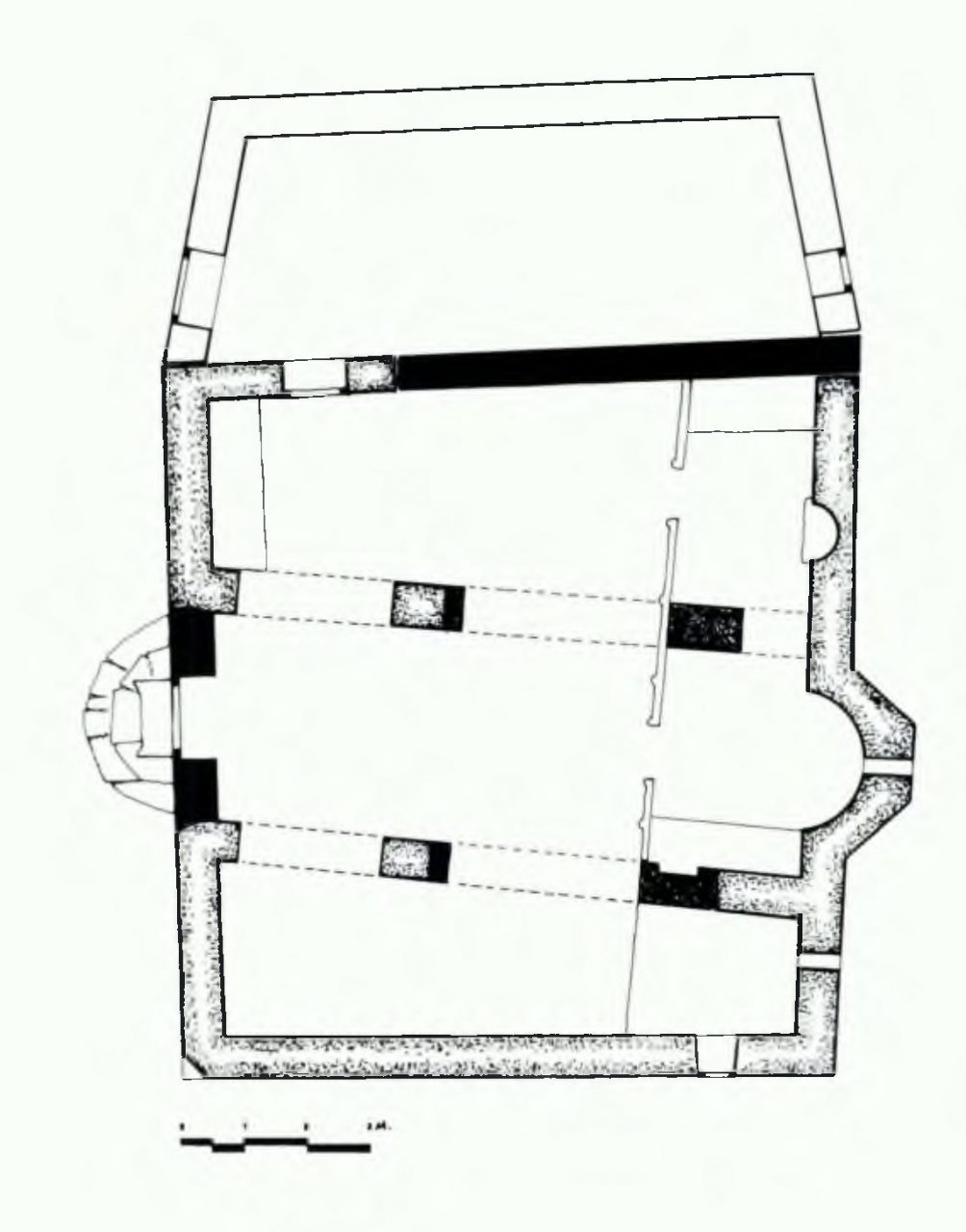Επίσκεψη
ΙΕΡΟΣ ΝΑΟΣ ΠΑΝΑΓΙΑΣ ΠΑΛΑΙΟΦΟΡΙΤΙΣΣΑΣ, 15ος – 18ος αι. / PANAGIA PALEOPHORITISSA, 15th – 18th c.
Η Παναγία Παλαιοφορίτισσα ή Παντάνασσα, είναι μία τρίκλιτη βασιλική με επάλληλες μετασκευές και προσθήκες στον 16ο και 18ο αι., σε ένα αρχικό κτίσμα του 15ου αιώνα. Οι παλαιότερες τοιχογραφίες διατηρούνται στο βόρειο αρχικό τοίχο του ναού και χρονολογούνται στο τελευταίο τέταρτο του 15ου αιώνα, ενώ τα μεταγενέστερα στρώματα χρονολογούνται στο 16ο και στις αρχές του 18ου αι. Στο 16ο αι. διακοσμούνται τα πρώτα προς το ιερό εσωρράχια των τόξων του κεντρικού κλίτους και τμήματα επιφανειών επάνω από αυτά. Στις αρχές του 18ου αι. χρονολογούνται οι τοιχογραφίες στο χώρο του ιερού και της πρόθεσης. Το εικονογραφικό πρόγραμμα της περιόδου που σύμφωνα με επιγραφή χρονολογείται στα 1730, δεν έχει κάποιον ειρμό. Παραστάσεις σώζονται στην επάνω ζώνη του νότιου τοίχου του νότιου κλίτους, στο ίδιο ύψος του δυτικού τοίχου του νότιου κλίτους, στην επάνω ζώνη του νότιου, του δυτικού και του βόρειου τοίχου του βόρειου κλίτους, στην επάνω ζώνη των δύο όψεων του διαχωριστικού τοίχου μεταξύ κεντρικού και νότιου κλίτους, στην επάνω ζώνη του βόρειου τοίχου του κεντρικού κλίτους, στον δυτικό τοίχο του κεντρικού κλίτους, σε μία δεύτερη ζώνη, σε όλες τις επιφάνειες του κυρίως ναού, στα εσωρράχια των τόξων του κεντρικού κλίτους, και στο βόρειο κλίτος.
Panagia Paleophoritissa or Pantanassa is a three-aisled basilica dating back to the 15th c., with later reconstructions and additions in the 16th and 18th c. The earliest mural paintings can be traced on the northern wall of the original building, dating back to the last quarter of the 15th c., while subsequent layers date back to the 16th and early 18th c. In the 16th c., the first intrados (curved surfaces of the arches) of the nave’s arches towards the sanctuary and sections of surfaces above were decorated. The mural paintings in the sanctuary and the prothesis (left part of the sanctuary) date back to the early 18th c. The iconographic repertoire of the period, which, according to an inscription, dates back to 1730, is not consistent. Depictions survive on the upper band of the southern wall of the southern aisle, at the same height on the western wall of the southern aisle, on the upper band of the southern, western and northern wall of the northern aisle, on the upper band of the two façades of the separating wall between the nave and southern aisle, on the upper band of the northern wall of the nave, on the western wall of the nave, on a second band, on all the surfaces of the main church, on the intrados of the arches of the nave, and on the northern aisle.
